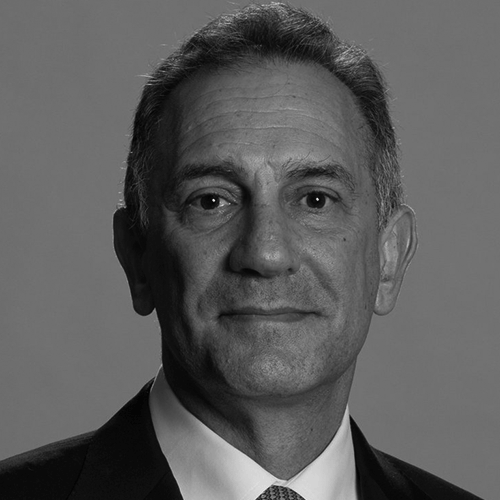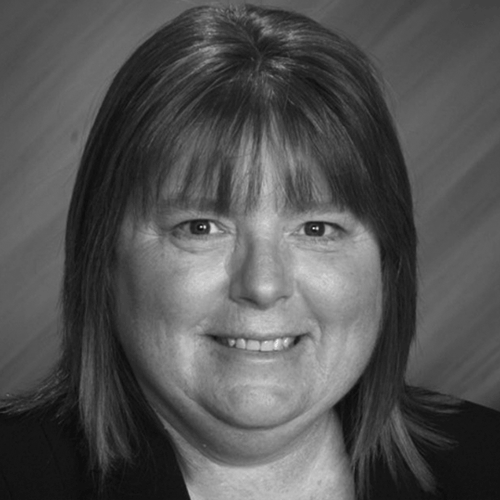As the rate of accidental deaths from overdose continues to rise, Mediaplanet had a conversation with industry leaders focused on fighting and overcoming the stigma associated with addiction.
According to the most recently available data from the Centers for Disease Control and Prevention, in 2015 alone, 143 people died of a drug overdose every day[1]. In the United States, overdoses have surpassed car accidents as the number one cause of accidental death, increasing by over 300 percent in the last two decades[2].
These statistics prove what too many American families already know all too well — that we are in the midst of a devastating crisis, and the number of those affected appears to be growing daily.
Yet, only 1 in 10 Americans with a substance use disorder (SUD) will receive treatment[3].
Why? Because those living with SUD wage two battles — one against their disease and another against the persistent stigma that surrounds addiction. Tragically, for many affected, the judgement of family, neighbors, peers and society at large can be as damaging as the illness itself.
We gathered a group of leading voices advocating for change to discuss the impact of stigma on our public health crisis and discuss the ways that families, friends and communities can break down the barriers of fear, shame and ignorance, starting us all down the road to recovery.
Why is the fight against stigma for SUD such a critical issue?
Jessica Hulsey Nickel: SUD is a disease, not a decision. Heart disease, lung cancer and Type 2 diabetes are all impacted by patient behavior, but they are still health conditions. Our own biases create stigma for patients and families — stigma that can stop people from seeking treatment and families from reaching out for help, neighbors from going next door with a casserole dish and offers of help.
Patty McCarthy Metcalf: Some people may still think that there’s a moral failure with SUD, that people should just pull themselves up by their bootstraps. We focus on eliminating this stigma and showing that there are millions of Americans that have found long-term recovery from addiction. By overcoming the shame and stigma, many more people are reaching out for help.
Gary Mendell: The last time my son Brian came home was four months before he died. He and I were sitting on the back porch, talking. He said, “Someday, I wish people would realize I’m not a bad person.” When Brian died, he hadn’t used a substance in 13 months. He took his own life out of the shame that he felt. Unfortunately, that day that Brian spoke of is too far away because too many people see SUD as an issue of weak character or poor choices.
How does stigma hurt treatment and recovery?
Mendell: If you have a relapse with heart disease, you go to the hospital. If you relapse with SUD, you go to jail. 21 million people have SUD, and I guarantee you those 21 million people feel alone, judged, shamed and silenced.
McCarthy Metcalf: The barriers to long-term recovery are in medical care, education, housing and employment. There’s a lack of understanding from many employers, policymakers and public officials who often contributed to the stigma. If people with SUD can’t obtain fair and equal access to affordable treatment and recovery support services, many families are not able to break that multi-generational cycle of addiction.
How do we end the stigma?
Nickel: Raise awareness of how SUD changes the brain. Someone you love can seem very different when they have SUD, but breaking down the brain science can carve a path toward compassion.
Mendell: By moving recovery into our health care system; having it be required courses in medical school; offering continuing education courses for doctors and nurses; and updating insurance plans so treatment and recovery services are covered — and with the proper reimbursement rates so doctors will want to treat SUD. We need to change the language we use. “Addict” and “clean” are derogatory words.
McCarthy Metcalf: By sharing recovery stories publicly — demonstrating that people in recovery are from all walks of life — we can put a face and a voice on recovery. Everyone can do their part to build recovery-ready communities by providing recovery services, education and support for those with SUD and their families.
The Panel of Industry Leaders:

Gary Mendell
Gary Mendell is the founder, chairman and CEO of Shatterproof™, a national nonprofit organization “dedicated to ending the devastation that addiction causes families.” In 2011, Mendell lost his son Brian to addiction, resigning from his job not long after to build Shatterproof. The community of advocates works to implement state and federal policy change and has already passed life-saving legislation in 14 states. Shatterproof’s Community Alliance program, numbers nearly 650 local ambassadors, and the Shatterproof Challenge Rappel and Shatterproof Rise Up Against Addiction 5K Run/Walk are the largest peer-focused addiction event series in the nation.
Head to Shatterproof’s website to learn more and get involved.

Jessica Hulsey Nickel
Jessica Hulsey Nickel is the president and CEO of the Addiction Policy Forum, “a diverse partnership of organizations, policymakers and stakeholders committed to working together to elevate awareness around addiction and to improve national policy through a comprehensive response.” Driven by a personal passion — Nickel has lost several family members to addiction — she has spent over two decades on Capitol Hill, working in areas of the addiction field including prevention, treatment and criminal justice reform. The Addiction Policy Forum formed a Families Committee, which now has over 1,400 members nationwide who champion addiction awareness, share resources in their local communities and meet with their legislators to encourage a legislative response to addiction.
Head to Addiction Policy Forum’s website to learn more and get involved.

Patty McCarthy Metcalf
Patty McCarthy Metcalf is the Executive Director of Faces & Voices of Recovery. In long-term recovery from alcohol and drug addiction since 1989, Metcalf has dedicated her career to public policy and education, community mobilizing, peer-based recovery support services and peer workforce development. She has helped develop a national accreditation for recovery community organizations as well as standards for peer support programs. Faces & Voices of Recovery is a national nonprofit organization “dedicated to organizing and mobilizing the over 23 million Americans in recovery from addiction to alcohol and other drugs, our families, friends and allies into recovery community organizations and networks.”
Head to Faces & Voices of Recovery’s website to learn more and get involved.
Another perspective: Listening to the voices of SUD
Gloria Perrotta’s daughter, Genna, is in recovery from SUD. She is a now a volunteer fundraiser with Shatterproof.
Jesse Heffernan is in long-term recovery from substance addiction. He now serves as the National Outreach and Empowerment Coordinator of Faces & Voices of Recovery.
How has stigma affected your life?
Gloria Perrotta: People who knew my daughter was in recovery from SUD wouldn’t look at me in the grocery store, like I had a disease they might catch. People will criticize our parenting and say we were too liberal, too flexible. When Genna relapsed, we were asked, “You’re gonna help her again?” I’ll help her as long as she needs.
Jesse Heffernan: Part of my stigma is as a felon. Early in my recovery, I didn’t share my past with SUD as much because I felt more shame about it. I’d hear comments made about people with addiction as “junkies.” There were definitely some jobs that were denied to me because of this.
How do you see stigma impacting treatment?
Perrotta: For Genna’s recovery, or anyone with SUD, we’re just making it harder for them if they’re in a really judged zone. They’re working harder than any of us every day to be a better person.
Genna’s recovery program is good, but it’s difficult to find access to these programs and some aren’t nearby. You’d like to know what the good programs are. What’s good? What’s reputable? But there’s so much secrecy around it, people don’t reach out.
Heffernan: There is so much resiliency in kids going through SUD and recovery, and they’ll make their way in the world if they’re given opportunities. They’re looking for survival, looking for some connection. We’ve lost that empathetic connection. Eliminating stigma will open more doors for young people to get the treatment and recovery support they need.
If you or a loved one is struggling with SUD, you are not alone.
To find both inpatient and outpatient options for specialized drug treatment facilities in your area, call the U.S. Department of Health and Human Services helpline, at 1-800-662-HELP (4357), or visit findtreatment.samhsa.gov.
For additional questions and resources, call the SAMHSA (Substance Abuse and Mental Health Services Administration) National Helpline at 1-800-662-HELP (4357) or visit the Behavioral Health Treatment Service Locator online.
Sources
[1] The Centers for Disease Control and Prevention, “Increases in Drug and Opioid-Involved Overdose Deaths — United States, 2010–2015”
[2] The United Nations Office on Drugs and Crime (UNODC), “2017 World Drug Report”


